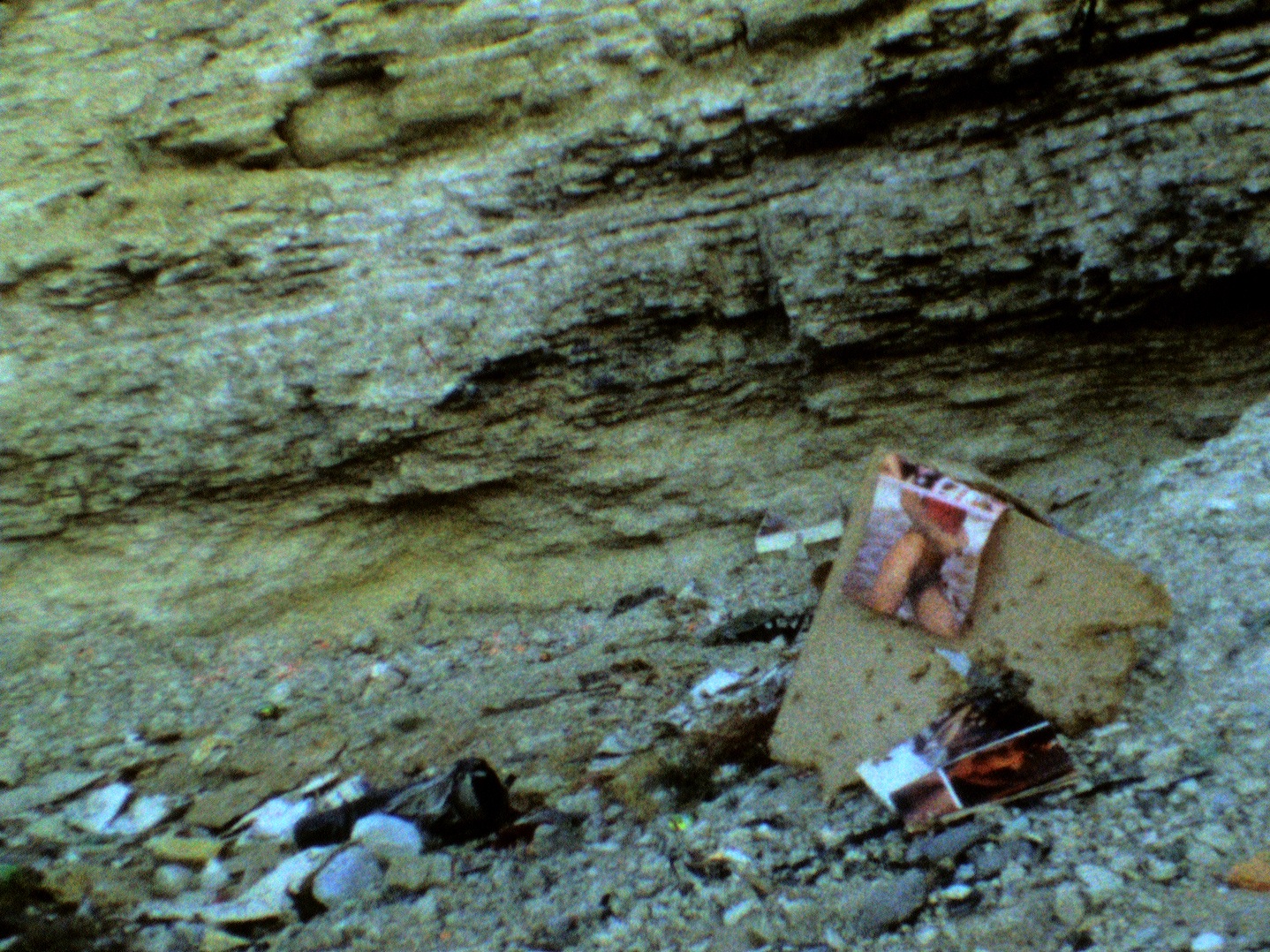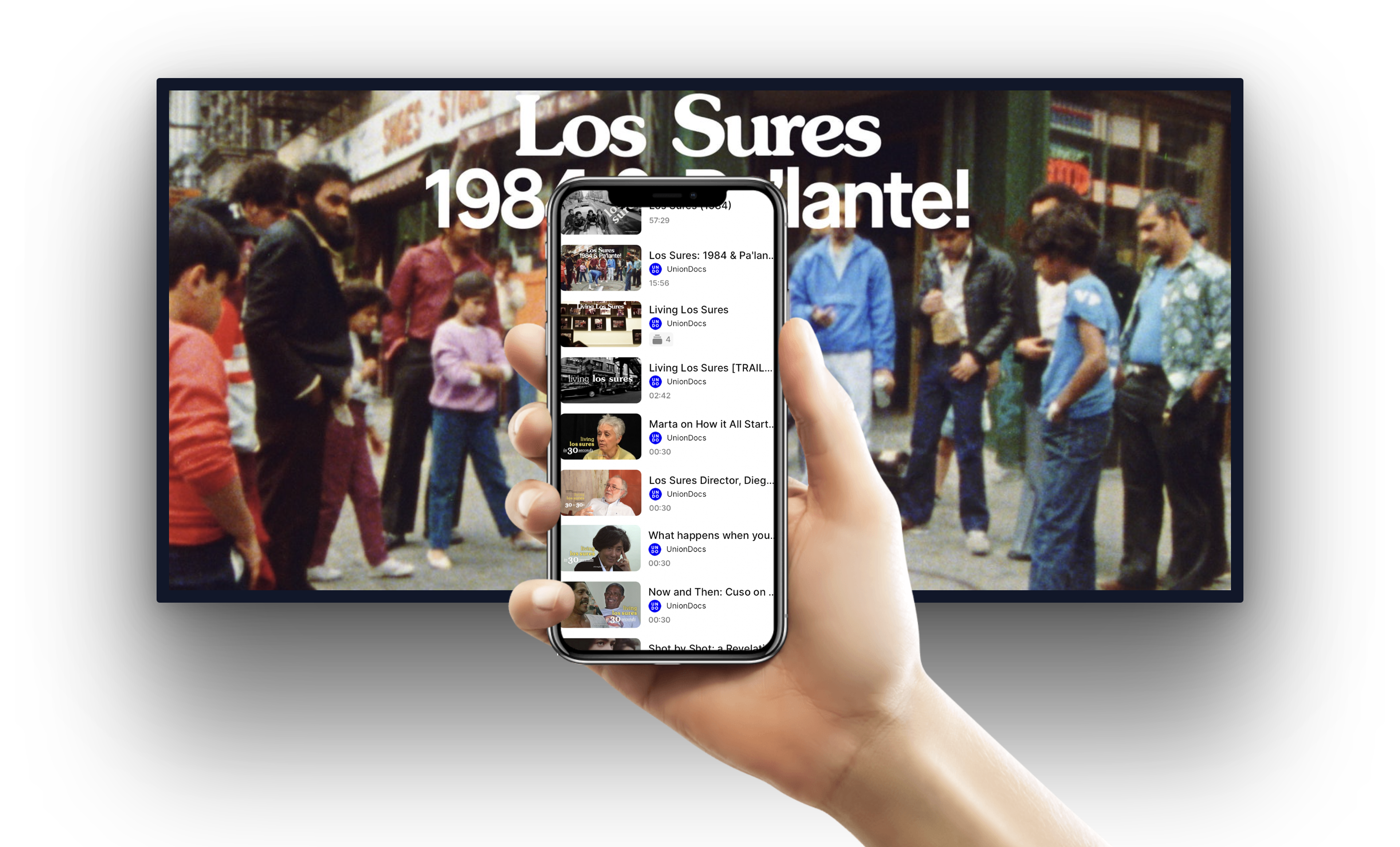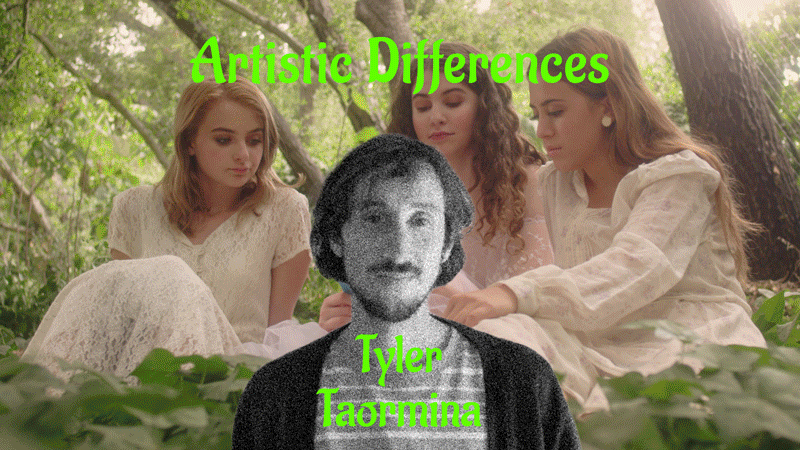What does the landscape reveal? What does it hide? Each of these short films is a map of sites unseen and lands lost in time.

- This event has passed.
Dec 8, 2012 at 7:30 pm
Those Strange, Inescapable Lines and Slivers
With Jesse Pires, Jeremy Moss and Joshua Bonnetta.
Program
Those Inescapable Slivers of Celluloid by Jeremy Moss
7 min., 2011
Stumbling upon sun bleached bullet-riddled vintage pornography sequestered in hidden desert nooks and sagebrush, circuit boards and shattered glass along off-the-path shooting ranges, rotting cow parts in ritual-like mounds, a prophet’s omniscient and culpable gaze; contemplating ideology and place, attempting to apply memory to moving image. Part lyrical exploration, part structural landscape study – an abstract/personal Super 8mm collage documentary with soundtrack by Olivia Block.
Somnium by Rosa Barba
20 min., 2011
“Rosa Barba produced a science fiction film based on interviews with local residents and individuals involved in the land suppletion project for Maasvlakte 2. Barba asked the interviewees to imagine what this new land could look like in the future. While we see images of the new land, the slufter: a storage reservoir for heavily contaminated sludge from the new Meuse river, the construction of the huge docksides, basalt blocks, empty containers and the mechanical movements of the transhipment process, we listen to a story apparently taking place in the future. The main character is a beekeeper who started with his first hive on the Maasvlakte, 30 years ago, and is now surrounded by silos for oil storage. Combined with archive pictures of the port, the images form a mechanical ballet of man and machine, set against a futuristic landscape.” – SKOR, Foundation for Art and Public Domain
Strange Lines and Distances, Joshua Bonnetta
30 min., 2011
Strange Lines and Distances is a two-channel audiovisual installation focusing on Guglielmo Marconi’s first transatlantic radio broadcast. The work is inspired by Marconi’s belief that sound never diminishes, but rather grows incrementally fainter and fainter. He believed that with an adequately sensitive receiver, one could amplify the echoes of history. Strange Lines and Distances looks at and listens to the past, revisiting Marconi’s original transmission sites in order to explore the hauntological aspects of radio and landscape. The installation invites a consideration of the monumental impact of the first wireless transmission, and explores the medium’s potential to conflate and fragment both space and time. Strange Lines and Distances takes its title from a passage in Francis Bacon’s utopian text New Atlantis, in which Bacon imagines a futuristic society’s culture, politics, history and media. In contradistinction, Strange Lines and Distances moves backwards, retrospectively exploring the invention of radio while looking for echoes and historical intimations of the past within the present.
Strange Lines and Distances’ dual channels represent the transmission site in Poldhu Cove, U.K. and the receiving site at Fever Hospital, St. John’s, NL. Each historical site is documented using 16mm colour negative film. The sonic composition was created from site-specific field recordings, shortwave and longwave radio recordings and archival material. Mired in static and atmospheric interference, the recordings exist as fragmentary spectres of outport beacons, noise, musical passages and human voice. Visually, each channel contains imagery that resonates and rhymes with the opposing channel in terms of shape, line, colour, light and optical geometry. Through a visual examination of the sites’ topographical similarities, the work plays with the juxtaposition of landscape, architectural ruins, flora, and geological and meteorological phenomena. The images unfold as a series of long shots, and this play with duration creates a montage that asks the spectator to consider distance and the poetics of form.
57 min
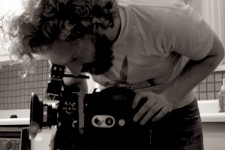
Jeremy Moss is a filmmaker and an Assistant Professor of Film and Media Studies at Franklin & Marshall College in Pennsylvania. He was born in Southern Utah where he grew up surrounded by the intensity of a stark desert landscape and the Mormon ideology and culture. After a two-year missionary stint in Brazil and a degree in English Literature, he moved eastward to Ohio where he pursued an M.F.A. in filmmaking. His moving image work is distinctly structural, at times surrealist – an intrinsic, yet subversive, extension of, and response to, the place of his upbringing. His own formal asceticism, clearly pushes for new and alternative experiences, both cultural and aesthetic, exploring the relationship of moving bodies within moving frames, the impact of jolting montage juxtapositions, and an ongoing existential narrative. His films have screened throughout the United States and Europe, in Latin America, Australia, and Asia.

Joshua Bonnetta is an artist working with film, video and sound in various modes of theatrical exhibition, performance and installation. His work has shown at the Berlinale, Toronto International Film Festival, European Media Arts Festival, Images Festival, Mutek International Festival of Electronic Music, Rotterdam International Film Festival and at various other festivals and venues through out Europe, U.K., Russia, North & South America. He is the two time winner of the Deluxe Cinematic Vision Award for excellence and visual innovation (2010, 2012) and the 2009 winner of the National Film Board of Canada Award to the Best Emerging or Mid-career Canadian Film or Video Maker from the Images Festival. His soundtracks have been released by the Milan based Senufo Editions and forthcoming on U.S. label Experimedia.He is an Assistant Professor in the Department of Media Arts, Studies and Sciences at Ithaca College in Ithaca, NewYork.
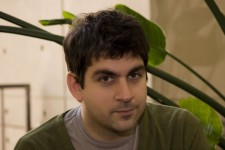
Jesse Pires is a curator based in Philadelphia.

